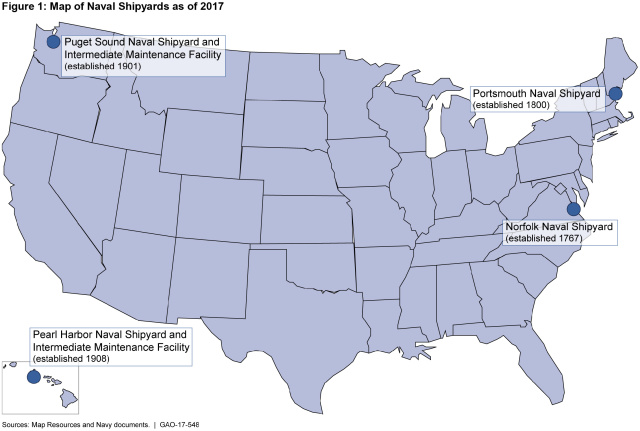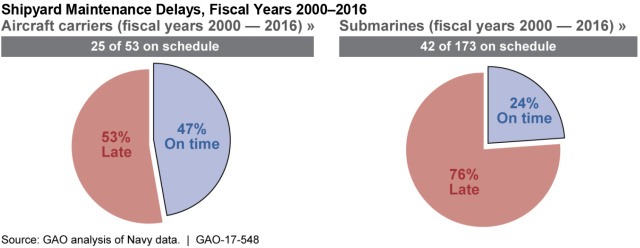Navy Readiness: What Happens When Old Shipyards Meet a Modern Fleet?
 (Excerpted from GAO-17-548)
(Excerpted from GAO-17-548)
(Excerpted from GAO-17-548)
Shipyard Facilities and Equipment Challenges Shipyard official told us the causes of these maintenance delays are partly a result of inadequate facilities and equipment, including:- A $4.8 billion facilities restoration and modernization backlog that has increased by 41 percent in the past 5 years
- Antiquated drydocks that average 89 years old and which pose flooding, seismic, and obsolescence risks
- Inefficient and unreliable ship repair equipment that has aged beyond its expected service life
(Excerpted from GAO-17-548)
To learn more about shipyard facility and equipment challenges and their effect on Navy readiness, including what we recommended to the Navy on how to improve its facility and equipment planning, check out our full report.- Questions on the content of this post? Contact Zina Merritt at merritz@gao.gov
- Comments on GAO’s WatchBlog? Contact blog@gao.gov.

GAO's mission is to provide Congress with fact-based, nonpartisan information that can help improve federal government performance and ensure accountability for the benefit of the American people. GAO launched its WatchBlog in January, 2014, as part of its continuing effort to reach its audiences—Congress and the American people—where they are currently looking for information.
The blog format allows GAO to provide a little more context about its work than it can offer on its other social media platforms. Posts will tie GAO work to current events and the news; show how GAO’s work is affecting agencies or legislation; highlight reports, testimonies, and issue areas where GAO does work; and provide information about GAO itself, among other things.
Please send any feedback on GAO's WatchBlog to blog@gao.gov.


